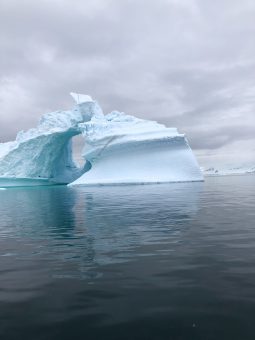
An international team of scientists has reached the Thwaites glacier in Antarctica and is preparing to drill through more than half a kilometre of ice into the dark waters beneath.
The 600-metre deep borehole will allow researchers to lower down a torpedo-shaped robotic submarine that will explore the underside of the ice shelf to better understand why it is melting so fast.
Thwaites glacier, which is part of the west Antarctic ice sheet, has lost an estimated 540bn tonnes of ice since the 1980s. But recent measurements show that the melting of the glacier is speeding up, sending even more ice into the Amundsen Sea.
“There are several glaciers in Antarctica that are doing similar things, but this is the one we are most worried about,” said David Vaughan, the director of science at the British Antarctic Survey, who has travelled south with the UK-US drilling team.
Thwaites glacier is one of the most remote and inhospitable places on Earth. It has taken the researchers weeks to get themselves and their equipment to the drilling site, a spot on the ice shelf about 1,500km (932 miles) from both the British Antarctic Survey’s Rothera research station and the American McMurdo station.
In brutal conditions, where the temperature can fall below -20C, the researchers will have only a few days to drill through the ice shelf, deploy the “icefin” submarine and retrieve it, and set a suite of monitoring instruments into the ice before the hole freezes over. “The aim is to do it as rapidly as possible. All of this will happen in three to four days. They really can’t afford to muck about,” said Vaughan.
The expedition to the Florida-sized glacier became more pressing this year when Nasa scientists used ground-penetrating radar to reveal a massive cavity in its base. The cavern, two-thirds the size of Manhattan and 300 metres tall, was formed as 13 bn tonnes of ice melted away over the past three years. The enormous cavity allows water to get under the glacier and melt it from beneath.
Earlier this week, scientists on the team hauled radar-equipped sledges over the ice to map the thickness of the shelf near the “grounding line” where the glacier leaves land and extends over the sea. The map will help them pinpoint where to drill the borehole. During the site assessment, they came across a crevasse that plunged deep into the ice shelf.
Once they get the green light, the scientists will use a hot water drill to bore a 30cm-wide hole through the ice shelf. The equipment can melt a hole at about 1.5 metres per minute, meaning it will take more than six hours of nonstop drilling to get all the way through. Small teams who sleep overnight in tents on the ice will work in rotation around the clock to drill the hole, deploy the submarine, and set other instruments into the borehole for long-term monitoring.
“Nobody has ever been able to drill through the ice close to where it starts to float and that is the critical point,” Vaughan told the Guardian. “If everything goes to plan, they will drill the hole and then ream it out until it’s about 50cm across, and then lower in the autonomous underwater vehicle. That will actually go into the cavity and send back images in real time so they can navigate it right up to the point where the ice starts to float.”
Read more: Guardian

